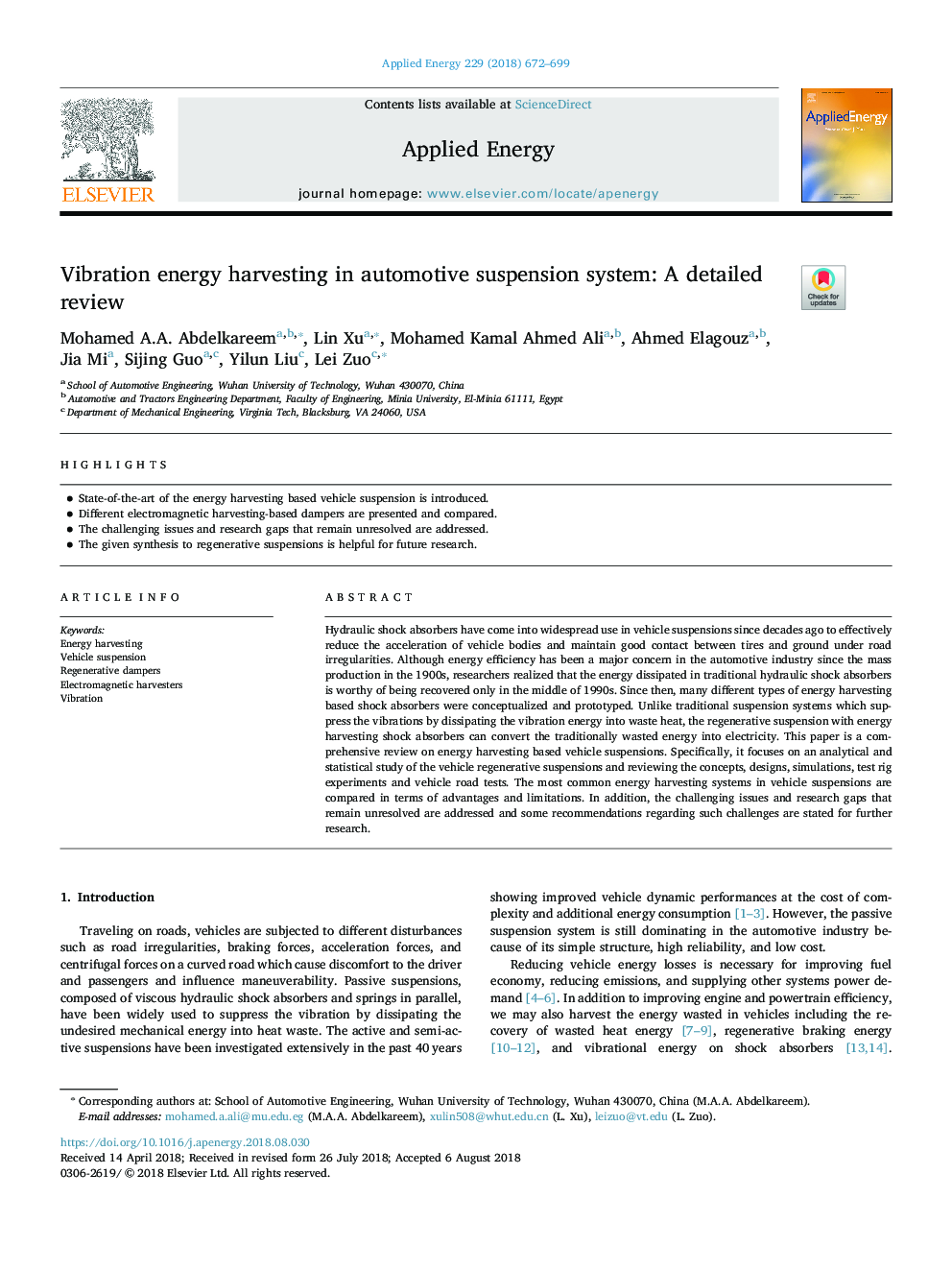| Article ID | Journal | Published Year | Pages | File Type |
|---|---|---|---|---|
| 6679667 | Applied Energy | 2018 | 28 Pages |
Abstract
Hydraulic shock absorbers have come into widespread use in vehicle suspensions since decades ago to effectively reduce the acceleration of vehicle bodies and maintain good contact between tires and ground under road irregularities. Although energy efficiency has been a major concern in the automotive industry since the mass production in the 1900s, researchers realized that the energy dissipated in traditional hydraulic shock absorbers is worthy of being recovered only in the middle of 1990s. Since then, many different types of energy harvesting based shock absorbers were conceptualized and prototyped. Unlike traditional suspension systems which suppress the vibrations by dissipating the vibration energy into waste heat, the regenerative suspension with energy harvesting shock absorbers can convert the traditionally wasted energy into electricity. This paper is a comprehensive review on energy harvesting based vehicle suspensions. Specifically, it focuses on an analytical and statistical study of the vehicle regenerative suspensions and reviewing the concepts, designs, simulations, test rig experiments and vehicle road tests. The most common energy harvesting systems in vehicle suspensions are compared in terms of advantages and limitations. In addition, the challenging issues and research gaps that remain unresolved are addressed and some recommendations regarding such challenges are stated for further research.
Related Topics
Physical Sciences and Engineering
Energy
Energy Engineering and Power Technology
Authors
Mohamed A.A. Abdelkareem, Lin Xu, Mohamed Kamal Ahmed Ali, Ahmed Elagouz, Jia Mi, Sijing Guo, Yilun Liu, Lei Zuo,
